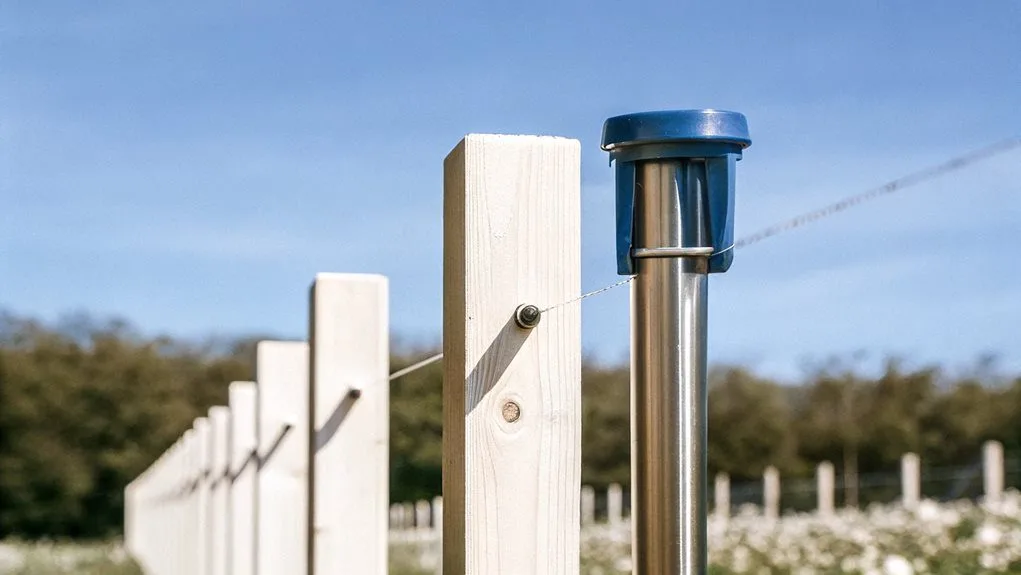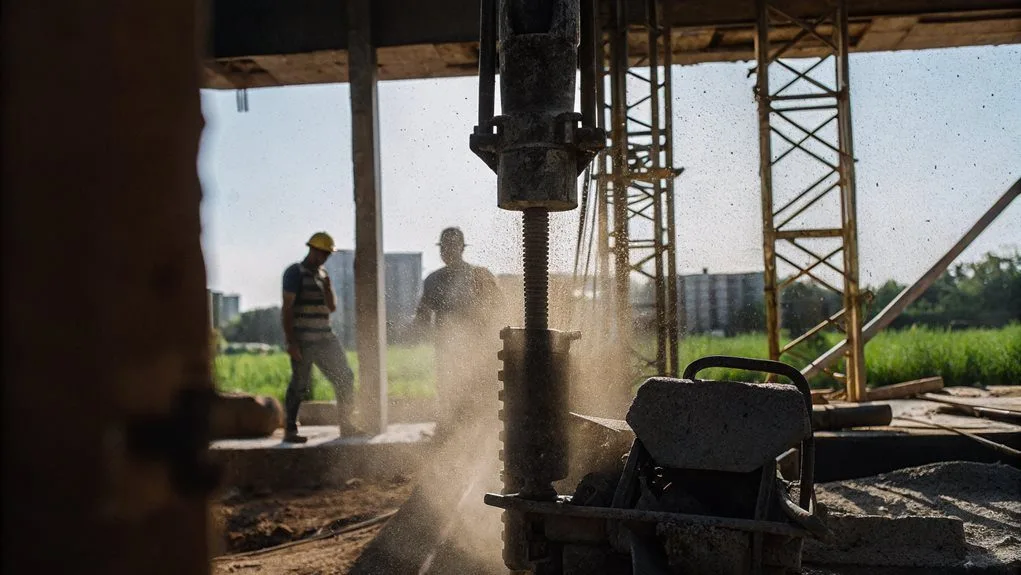So, your equipment’s gone kaput on-site? Great. First, shut it down before it causes more chaos. Then, check for safety hazards—because who wants an injury on top of the mess? You need to contact your supervisor and maintenance team ASAP. Isolate the faulty gear, document the issue, and maybe even take a moment to wonder if this all could’ve been avoided.
Stick around and we’ll hash out some preventative tips to keep things running smoothly. Proper maintenance schedules, regular inspections, and ensuring operators are properly trained can minimise the likelihood of equipment failures disrupting your operations.
Key Takeaways
- Immediately shut down the equipment to prevent further damage or safety hazards on site.
- Notify supervisors and maintenance teams to initiate rapid response and repair actions.
- Document the breakdown and inspect for underlying issues like inadequate maintenance.
- Communicate with hire providers to ensure prompt support and understand coverage options.
- Implement preventive maintenance practices to minimize future equipment failures and associated costs.
Understanding Equipment Breakdown in Construction
So, what’s the deal with equipment breakdown in construction? You might think it just means your fancy drill decided to take an unscheduled nap. Spoiler alert: it’s way worse.
Equipment breakdown insurance covers those annoying mechanical and electrical failures you didn’t plan for—like when your trusted excavator suddenly acts like it’s haunted. This insurance, evolved from complex jargon to something simpler, actually protects a range of equipment and related damages, including equipment breakdown coverage for things like generators and air conditioning systems.
Equipment breakdown insurance swoops in when your dependable excavator decides to misbehave unexpectedly.
But let’s be real, not all your gear is safe; household appliances don’t get the same VIP treatment.
And let’s face it: delays, repair costs that can easily reach tens of thousands of rand, and maybe some reputational damage for your company can be a real party pooper. Who knew staying afloat in South Africa’s construction industry could be this much of a headache?
Immediate Steps to Take When Equipment Fails
Equipment breakdown isn’t just a minor inconvenience; it can feel like your whole project hit a speed bump at 100 km/h.
First things first, shut down the equipment.
You want to avoid turning a small issue into a full-blown disaster, right?
Next, check the area.
Safety first, folks!
Notify your supervisors and maintenance teams, because they might want in on the fun.
Now, isolate that faulty gear like it’s a bad habit—keep everyone safe.
You’ll need to figure out what went wrong, so inspect and document everything.
Seriously, jot it down! Identifying root causes is crucial because poor maintenance often leads to sudden equipment failure.
Plan your repairs; sometimes a quick fix is an option, and sometimes it’s a trip to the repair shop.
Just remember, it’s not the end of the world…yet! Equipment breakdowns can lead to increased costs and project delays if not handled promptly.
Communicating With Your Hire Provider
How do you keep the lines open when things go south with your equipment?
First off, don’t wait until you’re knee-deep in chaos.
Set up clear communication protocols with your hire provider, like that group chat you never read. You’ll appreciate quick response times when equipment fails unexpectedly. Make sure you’re aware of your equipment breakdown insurance so you can mitigate costs when issues arise. It’s important to remember that annual inspections can help reduce the likelihood of unexpected failures. Feel free to use digital tools for real-time reports.
Establish solid communication protocols with your hire provider—don’t let that group chat become another ignored notification.
Yes, that means texting.
Regular meetings aren’t just for office gossip; they’re essential for managing expectations too.
Don’t forget to document everything, because “I thought it was fine” won’t cut it.
Lastly, keep that contact info handy—like a safety blanket.
If all else fails, at least you’ll be the one who didn’t ghost your hire provider.
Preventive Measures for Future Breakdowns
You’ve got your communication game with your hire provider down, but what about when things are running smoothly? Sure, it’s tempting to kick back, but don’t let your guard down just yet.
You need regular inspections—yes, daily check-ups. Operators should tighten that loose bolt before it turns into a drama. It’s essential to ensure that every operator understands improper operation, as this is a leading cause of equipment failure.
Ever thought about scheduling maintenance? Your machinery’s not magic; it’s got a calendar too! By prioritizing preventive maintenance, you can address issues before they escalate and avoid unexpected failures.
And what’s with training? Make sure your team knows the equipment as well as their favourite coffee order.
Pro tip: Keep a log of maintenance—trust me, it helps!
Finally, don’t skimp on quality parts. You might save a few rand now, but wait ’til that cheap replacement throws a tantrum—fun, right?
Learning From Breakdown Incidents for Improved Operations
What do you do when your day goes from smooth sailing to a crashing halt?
You know, like when your equipment decides it’s time for a holiday? It’s frustrating!
But hey, every breakdown teaches you something, right?
Learning from these mishaps can actually improve your operations.
How many times have you said, “Not again!”?
Take that anger and channel it into change.
Try root cause analysis, for instance.
It’s fancy talk for figuring out why things went wrong.
Or maybe, beef up that training programme—let’s avoid operator blunders!
You might think, “Who has the time?”
But trust me, fixing these issues can save you hours and rands in the long run.
Conclusion
So, there you have it. When equipment fails, don’t just stare at it like a deer in headlights. Get moving! Remember, 30% of construction delays are due to equipment breakdowns. Ouch! That’s a lot of wasted time. Communicate with your hire provider, take preventive steps, and learn from the mishaps. After all, you want to keep your site running smoothly, not as a monument to equipment failure. Let’s not make that a trend, okay?






